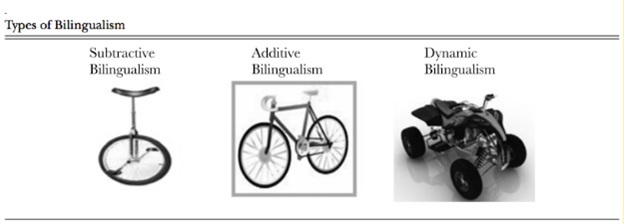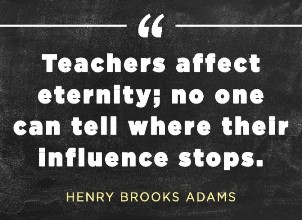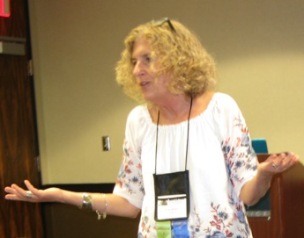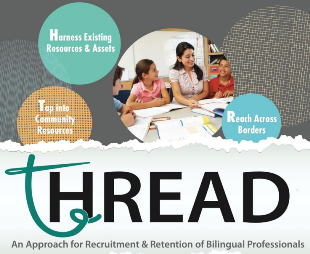NJ Teachers of English to Speakers of Other Languages/
NJ Bilingual Educators
ARTICLES
Adult Education: Andrea S. Fonteñez- A Refreshed View of the Task-Based Approach for Adult English Language Learners
Bilingual Elementary 1-8: Jack Meyers- Who Are Emergent Bilinguals and Why Do They Matter?
Bilingual/ESL Middle School: Michelle Land- Paying it Forward– The Benefits of Bilingualism
Bilingual/ESL Early Childhood: Jessica Perdomo-O’Hara- Using Props with Read Alouds
ESL Secondary: Hana Prashker- Preparing ELLs for Post-Graduation
Higher Education: Diana Sefchik- On the Road to Reality through Higher Education
Parent and Community Action: Angeline Sturgis- As with Open Arms
Special Education: Sonya Bertini- Farewell …It’s been a pleasure!
Supervisors: Laura Arredondo- Promoting Engagement for High School Newcomers
Teacher Education: Lisa Rose Johnson- Growing the Teacher Pipeline
Features: Spring 2019 – Looking Back, Looking Forward to Our 50th cELLebration
 Adult Education Special Interest Group (SIG)
Adult Education Special Interest Group (SIG)
A Refreshed View of the Task-Based Approach for Adult English Language Learners
Andrea S. Fonteñez, Ed.D.
The development of English language skills is critical for adult learners who are in need of developing both language and cultural skills in order to fully participate in their communities and succeed in their careers and education aspirations. The cultural, linguistic, and educational background diversity among adult English language learners (ELLs) makes it very challenging for educators to appropriately meet their needs.
With this context in mind, effective strategies such as a task-based approach to language teaching for adult English language learners can support language development in adults. The task- based approach is a student-centered approach that encourages adult language learners to use authentic target language in real world situations.
Task-based approach draws on several principles from the communicative language teaching movement (Richards and Rodgers, 2001) such as:
- Activities that involve real communication are essential for language learning.
- Activities in which language is used for carrying out meaningful tasks promote learning.
- Language that is meaningful to the learner and supports the learning process.
Furthermore, task-based language activities focus on linguistic functions which refer to the general social uses of language, such as initiating and participating in social interactions, expressing personal feelings, opinions, and ideas, describing aspects of daily life, and so on. Task-based activities are not grammar-based but rather depend on the vocabulary and structures needed to complete the task. Hence, assessment is based on the outcome of the task through the four language domains and using the correct register in the right socio-cultural context.
Johnson (1995, cited by Long, n.d.) identifies “four key requirements for interaction to create an effective task-based classroom”:
- Creating contexts of language use where students have a reason to attend to language
- Providing opportunities for learners to use the language to express their own personal meanings.
- Helping students to participate in language-related activities that are beyond their current level of proficiency.
- Offering a full range of contexts that cater for a full performance in the language.
The task-based approach places great emphasis on communication and interactions, that is, what students have to learn and how they interact to learn and practice. This is achieved through tasks rather than rigid exercises and grammatical structures. One way to do this, is giving students the opportunity to interact in groups, problem solve and apply critical thinking skills.
Tasks are activities that people do at work, at play, and in everyday life. Some examples of tasks are painting a fence, dressing a child, filling out a form, buying a pair of shoes, making an airline reservation, borrowing a library book, taking a driving test, taking hotel reservations, writing a check, finding a street destination, and the like. Tasks fall under the following classification (Richards and Rodgers, 2001):
Jigsaw tasks: These involve learners combining different pieces of information to form a whole. (e.g. learning about different viewpoints on a historical/current event or discovery)
Information-gap tasks: One group of students has one set of information, and another group has a complementary set of information. This type of activity allows students to request information, ask for clarification and negotiate both meaning, particularly when misunderstandings occur, and appropriate conclusions to the task.
Problem-solving tasks: Students complete team-building exercises by arriving at a solution to a problem.
Decision-making tasks: Students are given a problem for which there are a number of possible outcomes and they must choose one through negotiation and discussion.
Opinion exchange tasks: Students engage in discussion and exchange of ideas. (e.g. after reading an article about school on the weekends, students voice their opinions) Students do not need to reach an agreement.
The task-based approach has been around for decades and continues to be an effective method for teaching adult ELLs. It engages all learners in the lesson, makes learners (not the teacher) the focus of the lesson, addresses learner’s needs and interests, and provides maximum opportunities for student participation. This approach in conjunction with other teaching methods and strategies can enhance instruction for adult English language learners in multiple ways.
References:
M. Long, n.d. “A Role for Instruction in Second Language acquisition: Task-Based Language Teaching” retrieved from https://books.google.com/books?hl=en&lr=&id=8uXBeeVdsKsC&oi=fnd&pg=PA77&dq=task+based+instruction+adult+ESL&ots=G6dxXl7iWP&sig=FceR04Zq49IhnkEFRAqamYmCaGQ#v=onepage&q=task%20based%20instruction%20adult%20ESL&f=false on 3/15/19
FluentU, “Five Task-Based Language Teaching Activities to Stimulate Key Situations” retrieved from https://www.fluentu.com/blog/educator/task-based-language-teaching-activities/ on 3/15/19
Jigsaw Activities. Retrieved from https://www.cultofpedagogy.com/jigsaw-teaching-strategy/ on 3/15/19
Problem Solving Activities. Retrieved from https://www.mindtools.com/pages/article/team-building-problem-solving.htm on 3/15/19
J. Richards and T. Rodgers, 2001. Approaches and Methods in Language Teaching. Cambridge University Press.
Andrea S. Fonteñez, Ed.D. is the Adult Education SIG Representative and Director of Bilingual/ESL Education, New Brunswick Public Schools.
Bilingual Elementary Special Interest Group
Who are Emergent Bilinguals and Why Do They Matter?
By Jack Meyers
In the field of bilingual education, we the teachers are often inundated with a seemingly unending number of acronyms. The sheer task of deciphering them seems overwhelming at times. However, I have just one more for you that is of vital importance.
The term that I am in an urgent need to introduce to you all is Emergent Bilingual, or EB (EBs, plural). Now, let me give you the background for this terminology and the “why” behind it. We all know that our English Language Learners (ELLs) come from a variety of native and heritage languages. What we often are missing in our instruction, curriculum, and assessment design is the inclusion of our students’ bountiful language facilities and knowledge bases. As a result, our ELLs are suffering what we could refer to as “subtractive bilingualism.” This is the process by which students lose one language and they are gaining the target language. For example, a native Spanish speaker comes to this country in 1st grade. Without native language academic instruction, the student becomes proficient in English and quickly “subtracts” their first language from their academic repertoire. On the other hand, there is “additive bilingualism,” where students maintain their native language(s) while acquiring academic and social English (or any target language). “Additive bilingualism” is an alternative approach to language teaching which honors and encourages the use of the home language.
Now, there is a language education model that is much more multi-dimensional, and which allows us as educators to access the full variety of students’ language abilities. This methodology is called dynamic bilingualism. As seen in the image below, when we allow Emergent Bilinguals to utilize the full depth and breadth of their language skills in academic settings, they are going to have much more success in the long-term. In other words, EBs’ languages are not separate and isolated, but intertwined and interdependent. When we do not teach into and through that complexity and nuance, it is a tremendous disservice to our Emergent Bilinguals (and Multilinguals, for that matter).

Furthermore, we as educators must ask ourselves, what is happening when EBs are not being identified in data tracking or are even being misidentified? In data reporting and home language surveys it is essential that we properly identify not only the Emergent Bilinguals who are still acquiring academic English, but also those who have been exited from Bilingual education programs are losing their connections to their home languages. García has brought the term Emergent Bilingual to its heightened popularity and co-authored a position paper on the poor data tracking of ELLs and the peril of ignoring EBs’ unique needs. In this piece, she acknowledges the dangers in missing out on EBs when she says that “we risk losing sight of the incredible potential of the millions of bilingual and multilingual children in this country who can become national resources in building a peaceful coexistence.” This of course means that the identification of EBs (or lack thereof) is an issue of funding and access to resources.
I propose that we make the move from calling these students “English Language Learners” to recognizing the promise they hold by calling them “Emergent Bilinguals.” Let’s make this move now, before it is too late. Let’s make the switch to “Emergent Bilingual” before our students are shamed away from their maternal tongues. Let’s make the change to “Emergent Bilingual” before our students are forced to sever ties with the entire foundation of their identity.
P.S. Keep in mind that these philosophies are based in duplicated, meaningful research on the process of acquisition of multiple languages. If you ever have questions about the foundations of this research or are looking for further reading, please reach out!
Jack Meyers, Bilingual Elementary Special Interest Group Representative
Bilingual/ESL Middle School 6-8 Special Interest Group
Paying it Forward – The Benefits of Bilingualism
By Michelle Land
 Every day, we have the opportunity to make a positive impact on the lives of our students. Through all the meetings, testing, screening, laughter and tears, it is important to remember that we are often an important lifeline for our English Language Learners (ELLs).
Every day, we have the opportunity to make a positive impact on the lives of our students. Through all the meetings, testing, screening, laughter and tears, it is important to remember that we are often an important lifeline for our English Language Learners (ELLs).
One way we can judge how we have impacted our students, is when students reconnect after graduation and reveal how they view their school experience. We always enjoy hearing about our students’ successes after they leave our classrooms, but it is especially rewarding when these students “make it big”.
One such student was in Noreen Drucker’s ESL class many years ago when he first came to the US at the end of 3rd grade. As he writes:
Moving to a new country can be a daunting experience — especially when it comes to learning a new language. It sure was for me. Thirteen years ago, I was one of these kids. My parents and teachers like Ms. Drucker were instrumental in my efforts to learn English and transition into my new home. And it is extremely encouraging that these young newcomers have people like Ms. Land and Mrs. Gonzalez to guide them through this important process. Their work for immigrant youth is exceptional — and we sure as heck need more of it in this country.
These kind words were sent to us by Camilo Montoya-Galvez. He graduated 4 years ago, and is in the beginnings of his career in journalism. He is also one of the many students who keeps in touch with his teachers. One such teacher is Sybil Gonzalez, who was his “Spanish for Natives” instructor. Along with the strong support of his family, she helped guide Camilo through the highs and lows of high school. After graduation, he kept in touch with Mrs. Gonzalez through social media, and together they discussed the possibility of his coming back to pay it forward by sharing his experiences with current ESL and journalism students.
Through one of our school’s Passion Projects, we were able to make it a reality. A Passion Project is the opportunity for teachers in our high school to make a difference. They strive to achieve a goal for our school about which they are particularly inspired.
I returned to my high school after more than three years to talk to students about my young career, the indispensable support I received at Randolph — as well as to highlight the irony that my profession now entails speaking and writing a language I knew nothing of when I attended my first ESL class in third grade (shout out to Ms. Drucker).
Before his visit, we shared some of Camilo’s work with the students by accessing his website: https://camiloreports.com. As the students soon learned, he is a journalist who has worked for Telemundo, and is now working for CBS. His articles and interviews are both in Spanish and English. Our students became very excited to meet this recent bilingual graduate who has been on national TV and writes about topics they are interested in. Much of his work is on immigrant issues, Puerto Rico’s recovery after Hurricane Maria, and soccer. (https://despuesdelsilbatofinal.com/)
Camilo set aside a whole day from his busy schedule to meet with students over the course of the day. He showed a recent clip from an interview he did on CBS, and then answered questions in both English and Spanish. For the ESL and immigrant students, many of the questions had to do with adjusting to their new country and finding their way. He emphasized the opportunities that the students had, and helped encourage them to be the best they could be. In addition to ESL students, journalism students were also invited to hear him speak.
The journalism students had specific questions about his education, how he was able to break into the business, and any advice that he could give them to achieve similar goals. They were amazed at the rapid success he had within the world of journalism. He emphasized that part of it was due to his bilingualism.
In between sessions, we planned on buying a nice lunch for him so he could relax and catch up with his former teachers, but that was not to be. Once Camilo heard that our students play soccer during lunch, he decided he wanted to see if “they were any good”, and how this ragtag group of ELL students would be able to play together. He immediately regretted not bringing his sneakers so he could play too. These students come to us from all over the world, but find a common language with a soccer ball, or rather, a fútbol. And they have a lot to say.
By the end of the day, the visit was an unmitigated success. Camilo’s willingness to participate with the students on their level, endeared him to them even more. By sharing his experiences on all levels, in a professional and supportive way, he is paying it forward.
Camilo disagreed:
But the students were the ones who inspired me. Their stories are what make me so optimistic about America’s future. These kids, and the work of their mentors, represent the best of America. They hail from all corners of the globe — from Colombia and Guatemala, to South Korea and Slovakia — but they espouse an admirable and contagious tolerance. They are ambitious, and determined to adapt to their new home and to make sure their families’ hard work pays off. They demonstrate the tireless immigrant hustle. And, they make a pretty good fútbol team, too.
Michelle Land is the NJTESOL/NJBE Bilingual/ESL Middle School 6-8 SIG Representative. She teaches ESL at Randolph Township Schools.
 Early Childhood ESL/Bilingual Special Interest Group
Early Childhood ESL/Bilingual Special Interest Group
Using Props to Make Read Alouds Interactive and Extend the Learning Experience
By Jessica Perdomo-O’Hara
The use of read alouds is very common in Early Childhood classrooms. Children are read aloud to every day, at least once. Long ago, read aloud or story time used to be a passive time in which children listened to the teacher reading a story. But since educators have learned that children learn best when they are “actively” engaged, and Story Time is not the exception, Read Alouds are expected to be engaging and interactive. With this in mind, props can help provide a more interactive experience before, during, and after a Read Aloud. If you are wondering what a prop is, it’s just an object related to the story you will read. It can be a 3D object, felt-made, or paper-made. In my own practice as a Pre-K ESL teacher, props are a must and I recommend them for daily use. Props can also be used as an intervention to increase students who are struggling to stay engaged or participate due to language proficiency. I personally use props for a variety of purposes:
- To introduce vocabulary prior to reading – this vocabulary can include key words that students need to know in order to understand the story, or target words we want to teach children.
- To find out what background knowledge children have about the topic to study (in the case of a non-fiction book) or what they know about the story.
- To involve students and promote the use of expressive language during picture walks (pre-reading strategy that focuses on the pictures of the story that will be read)
- To promote the use of expressive language during reading and make connections.
- After reading a story aloud, I use props as a tool for sequencing, retelling, and acting out the stories with students who still are not comfortable speaking in English in front of an audience.
- In addition, I make cards connecting the props with words (ex.picture of a boy and the word boy next to it) and the class plays letter matching games where the students identify letters by name. The students then find the props and words by initial sound if students have acquired letter identification skills.
- As an intervention, I recommend using props with children that are highly distractible or have difficulty staying engaged during read alouds; also, for students with very low English proficiency, props work as a visual support for oral participation.
- Props have also been shown to help students with sensory needs, for whom just holding something helps them focus.
In terms of acquiring props, I usually make my own by scanning the pages of the book I will read, cutting and laminating what I want. Making props can be time consuming, but the good news is that you only have to do it once. Lakeshore, Constructive Play Things, and other companies also sell them as Storytelling Kits, and of course there are websites out there where you can look. A website I like for props is kizclub because it offers black and white and color props, and it has a great collection. Don’t forget, props do not have to be fancy; students will be excited to have something in their hands and be able to use it to participate in the learning experience you are facilitating. Happy propping!
Jessica Perdomo-O’Hara is the NJTESOL/NJBE ESL/Bilingual Early Childhood SIG Representative. She teaches Pre-k ESL at North Plainfield Public Schools.
ESL Secondary Special Interest Group
Preparing ELLs for Post-Graduation
By Hana Prashker
This is the time of year that 12th graders start to get nervous about leaving high school and the next step in their lives. This is when my graduating ELLs and former ELLS tend to spend more time in my classroom during lunch and free periods – even when they do not need help with their present classes. My classroom is their safe place – to think and to keep and gain self-confidence.
Sometimes, these students may want to have a conversation about their future. Other times, they just want me to just listen. We have already had conversations about a four-year university, community college or no college. I have helped them with their personal essays and/or written recommendations for them. For some, I have helped them complete the FAFSA or the New Jersey Alternative Financial Aid Application.
For some students, they need to reevaluate their original decision because of cost, college rejection or living situations. We have already talked about Plan A, Plan B, and sometimes Plan C. As with all people, they feel sad and depressed when Plan A does not work out. Often, we discuss Plan B and Plan C again. I also have to remind them that just because Plan A did not work out, they have not failed. I often tell them my story for college that did not work out; but in the end, my Plan C was more appropriate and gave me more life possibilities than my Plan A.
Those who are going to college are often surprised that they may need to take ESL, Developmental English or Developmental Math before taking credit-bearing college courses since they have completed the requirements for high school graduation. This is an extra expense that they have not planned on. There is also a sense of frustration when they find out that this is a possibility. This issue will be discussed during the Higher Education Special Interest Group: Trends and Strategies.
 I am looking forward to attending and presenting at the NJTESOL/NJBE Spring Conference from May 29-May 31. Here is a preview of some of the presentations that may be applicable for ESL Secondary Education teachers:
I am looking forward to attending and presenting at the NJTESOL/NJBE Spring Conference from May 29-May 31. Here is a preview of some of the presentations that may be applicable for ESL Secondary Education teachers:
- Access to Higher Education for Immigrant Students
- ELLs Experience with Anxiety
- SLIFE Reframed: From Achievement Gap to Cultural Dissonance
- Co-Teaching 101
- Making Science Accessible to ELLs
- Technology in the ESL Classroom
- How to Develop Strategies for Advanced ESL Students
Join me at the ESL Secondary Special Interest Group Meeting on Thursday, May 30 for a review and discussion of the hot topics for high school ESL teachers. If there are specific topics you would like covered, please email me at hprashker@njtesol-njbe.org.
Hana Prashker is the NJTESOL/NJBE ESL Secondary Representative and Bergen County Chair. She teaches ELLs in Dumont and Hasbrouck Heights Public Schools, Bergen County.
Higher Education Special Interest Group
On the Road to Reality through Higher Education
By Diana Sefchik
 Higher education articles have been appearing in local and state newspapers more and more over the past years. Higher education is receiving more and more attention and that is good for our students. Institutions of higher learning realize that more initiatives need to be crafted to prepare our students for the workplace – for the real world – for the future.
Higher education articles have been appearing in local and state newspapers more and more over the past years. Higher education is receiving more and more attention and that is good for our students. Institutions of higher learning realize that more initiatives need to be crafted to prepare our students for the workplace – for the real world – for the future.
Community colleges are increasing partnerships with local employers to better prepare our students to enter into the workforce even before all the required procedures a re completed. Students get a taste of working side-by-side with their colleagues. This sense of work community helps students overcome challenges of the workforce before they venture on their own. This collaboration opens many doors to our English language learners who attend community colleges and vocational training institutions. Our students learn prerequisite skills on the job and learn skills that might not be taught in a traditional classroom.
As English as a second language teachers we also need to participate in this journey to reality. We are always concerned with providing our students with academic vocabulary and academic scenarios using speaking, listening, reading, and writing skills. We need to intensify our work. Let’s be part of the collaborative initiatives occurring around us. Our students range in ages from 18 to possibly 50 or 60. We have learned to differentiate instruction in our classes for newcomers and advanced English learners. Yet there are some basic tenets that we need to instill in all students. We want our students to be proficient speakers and writers in the workforce. In our classes we need to provide our students with strong communication skills and include topics such as navigating social media and how to professionally write memos, e-mails, letters, reports, proposals, instructions, and presentations. Through these writing endeavors, we need to continue to infuse editing and proofreading skills – mechanics and grammar are still important. Business writing courses need to be re-established.
In our work it is necessary for teachers to assist ELs in plowing through large amounts of reading – not all instructions are bulleted. Let’s help our students focus on particularly intense reading selections. Larger pieces of reading need to be broken down – the students need to develop the skills to do this independently.
The Chronicle of Higher Education’s 2019 Trends Report and Educause and Community College Journal reported that certain issues appear in institutions of higher education: remediation concerns, eliminating textbooks, online learning, and career planning assistance. As we have previously discussed in other articles, these areas bridge secondary and higher education institutions. It is necessary that we all collaborate to help our students develop problem-solving strategies, a solid foundation of academic and technical skills, and hands-on experiences at all educational levels.
As teachers we need to expand our visions and goals – we need to be responsive to our students’ participation in this new world order. When we collaborate and expand our horizons, we will most definitely expand our students’ horizons. After all, we are all in this together. We will continue to discuss these topics and more at the Higher Education Special Interest Group meeting at the NJTESOL/NJBE Spring Conference Friday May 31.
Diana Sefchik is the Higher Education SIG Representative. She works as an adjunct at Raritan Valley Community College and Seton Hall University.
 Parent Involvement and Community Engagement Special Interest Group
Parent Involvement and Community Engagement Special Interest Group
With Open Arms
Angeline Sturgis
A few weeks ago, I received an email from a woman I know who lives in Princeton. She is a remarkable person who is dedicated to helping those on the fringe, those without a voice, those who feel powerless in our society of dualities. In the email she shared a story about “Juan” a hardworking single father of two young girls. He was notified by mail that his immigration hearing was to be the next week and that his case for amnesty was going to be heard. My friend saw the letter and knew that Juan had been waiting for this moment for a few years. Wearing his best clothes, Juan went to his appointment in Elizabeth, NJ, only to be swiftly arrested, detained for hours without being charged and not permitted to phone his children or his cousin who looks after them after school. He was subsequently put into detention in that holding warehouse we’ve all heard about not far from Newark airport, and is slated for deportation. Juan has lived in Princeton, where he works for the Princeton public schools as well as a highly regarded restaurant. His daughters are citizens of The United States of America. His cousin has had to quit her job to manage the household and be there for the girls.
In a matter of hours, my friend’s email and accompanying Go Fund Me campaign had raised $1,500 for legal aid. In one day they had doubled that. In the latest update about Juan and his girls, the campaign had closed and over $6,000 had been donated by 98 people. This latest email was an update asking for people to stand by Juan for his upcoming appearance before a judge when he will plead his case to remain in this country as a hard-working single father who has never had as much as a traffic ticket, whose two little girls need their father.
If you are a teacher of English as a Second Language in New Jersey, you’ve already heard a story like this, already contributed, as I did, to a Go Fund Me campaign, and maybe even held sobbing children as they tell the story of their parent being taken away in handcuffs. That’s one side of our life as teachers. The other side is bearing witness to the biased chat in the faculty room about how Maria never has a good snack, or Jorge is still wearing a hooded sweatshirt in below-freezing weather, or fielding complaints about why that ESL second grader never brought in her diorama for the Heritage Week celebration. Like me, maybe at times like this you breathe deeply, channel Mr. Rogers, and try to gently remind your colleagues that sometimes families are dealing with quite a lot, and school is the best thing in a child’s life. Or it should be.
I’ve been in education a very long time, since the previous millennium actually, and in a few months I’ll be retiring. I’ve taught in two states and three countries, but my most meaningful work has definitely been in my small Central Jersey school district working with ESL students in grades K-3, and more specifically, working with children and their wonderful families. Our area was historically Eastern European, but during my years the ESL population switched to more than half Latino. In my small school we realized these families needed an introduction to the American education system. They needed to know they could play a very important part in their child’s educational success, regardless of language spoken at home. They needed to have those academic successes noted and celebrated. Ten years later we are still celebrating and awarding trophies, giving out free books, leading parent workshops in family literacy and have even started a community school for young children to learn to read and write in Spanish. That’s how much families matter in a child’s education. That’s how much families matter in life. That’s how much families mean to my like-minded colleagues and me.
During the last year, the rental market has slowly disappeared around our school. Apartments that are available are expensive and small. Our school lost a kindergarten this year, and most likely we’ll lose a first grade next year. Our Latino families are moving on to urban areas where rent is cheaper. I am hoping with all my heart that the ESL teachers in those schools have open arms to receive our former students and celebrate the achievements of their families.
I’m retiring while I’m still inspired, and before I get too tired, but there is so much more I want to do. Yesterday I found a great resource on “Raising Teens in a New Country” available in English, Arabic, and Spanish. I can just imagine a four week series on this with speakers and discussions and handouts. The same organization has a section on “Raising a Girl: A Handbook for Newcomer Mothers and Daughters.” Wow. I could really see this as chance to reach out to neighboring districts and provide a meaningful platform for families. Unfortunately, I won’t be here to do it. It is up to you, New Jersey teachers of ELLs. You all know how important families are. You all know the kinds of problems these beautiful children hold in their hearts when they walk into school each day, and the willingness and determination their parents bring with them when they come here to start a new life. The education of these students, and the empowerment of their parents is the mission. Embrace the children, include the celebration of their families, know that it is a high calling, and carry on with open arms.
Angeline Sturgis is the NJTESOL/NJBE Parent Involvement and Community Engagement SIG Representative for ESL K-3. She teaches at Eldridge Park School
Special Education SIG Representative
Farewell…It’s been a pleasure!
Sonya Bertini
 I began my tenure on the Executive Board of NJTESOL-NJBE as the Special Education Special Interest Group Representative a little over four years ago. I am ending it this June. This will be my last article for Voices and I want it to be reflective as well as a call to continued action. I think back to 2015 and I really believe quite a bit has changed insofar as what people know about students with disabilities who also happen to be English language learners. At my first spring conference as rep, I spent the whole time convincing my colleagues and fellow members that ELLs are entitled to SPED services by law, that there was no such thing as “double dipping”, that one service did not in fact trump the other, that there was nothing in the law that required a year or two year waiting period before a child could be referred to the Child Study Team and that children did in fact have to be tested in their native language. Fast forward four years and I really do believe that most everyone knows these facts.
I began my tenure on the Executive Board of NJTESOL-NJBE as the Special Education Special Interest Group Representative a little over four years ago. I am ending it this June. This will be my last article for Voices and I want it to be reflective as well as a call to continued action. I think back to 2015 and I really believe quite a bit has changed insofar as what people know about students with disabilities who also happen to be English language learners. At my first spring conference as rep, I spent the whole time convincing my colleagues and fellow members that ELLs are entitled to SPED services by law, that there was no such thing as “double dipping”, that one service did not in fact trump the other, that there was nothing in the law that required a year or two year waiting period before a child could be referred to the Child Study Team and that children did in fact have to be tested in their native language. Fast forward four years and I really do believe that most everyone knows these facts.
I also believe that after attending one of my workshops or reading one of my articles in Voices, most people know that the teacher providing language instruction (ESL teacher/bilingual teacher) to the ELL who is classified should be present at the CST meetings concerning this student’s program and they should be the teacher selecting the language goals and objectives on the IEP. I think most members understand the I&RS process and how it is different from the CST process. I hope that most teachers are aware of the types of modifications and accommodations that are appropriate for ELLs who are classified. If you aren’t sure, please come to my workshop this May at the Spring Conference! To summarize, what has changed during my tenure is an awareness of what is right, legal, required and a best practice. This is fundamental, and I am proud of this achievement.
However, there is always a reason to be humbled. There is still important work to be done. I am asking that you and my successor please advocate for your ELLs who are classified so that these doubly special students are taken into consideration when it comes to decisions made about state testing. It is unfair that a student with a learning disability whose native language is not English has to take the same standardized test as any other student and that passing this test may be a requirement for graduation. I feel very strongly that this is a violation of the student’s civil rights. ELLs with disabilities should be able to enter a vocational program at the high school level. In many cases they are barred from doing so now because they aren’t proficient in English or they don’t read at grade level – even in their own language.
Consequently, these very students are obliged to take college geometry or algebra II courses that often prove irrelevant to their needs. They are not learning a trade and they are not going to go to college. We must seriously question what we are doing and why. How are we preparing these students for life after graduation? Another area for advocacy is that involving exiting classified students from ESL/Bilingual program. It is quite possible that by virtue of a student’s disability s/he may never attain the ACCESS score (4.5) mandated by the state to exit the ESL program in their school. Is it fair that this student is obliged to stay in a program they may no longer need? It is my opinion that it is not. Multiple measures should always be used when exiting a classified student is being considered. The student’s disability as stated in his/her IEP should always be considered when looking at his/her ability to take a test and pass it.
One final point: always remember that an ELL who is classified is entitled to every service guaranteed by the law that any other classified student is entitled to. This means speech, occupational therapy, physical therapy and any other service that is warranted. If you’ve heard me speak, you know that I believe in being the squeaky wheel. We owe it to our students to advocate for them, especially when we are informed and know right from wrong.
It has been my pleasure to serve as the Special Education SIG representative for two terms. I have thoroughly enjoyed getting to know some of you at the annual spring conference and at the Edcamps. It has been an honor to represent you at the state level. I wish you all the best of luck as you continue educating multilingual learners.
Sonya Bertini is the SPED SIG representative. She teaches at the Vineland Public Schools.
 Supervisor Special Interest Group
Supervisor Special Interest Group
Promoting Engagement for High School Newcomers
Laura Arredondo
This year many new ELLs have registered in my school district. In every month, and during certain months nearly every week, we have greeted new students and helped them through the matriculation process. Has this been your experience? For our high school district, these teenagers often arrive without copies of report cards or immunizations, and often without parents. Most are from Central America, specifically Guatemala, Honduras or El Salvador. My friends from other school districts tell me that they are experiencing this influx as well. When we discuss the challenges in serving these kids, there always seems to be a voice exclaiming, “What is going on down there?”
We can only imagine the desperate conditions that would compel families to send children to this climate of increasing xenophobia, criminalization of the undocumented, and general hostility towards non-English speaking immigrants of color. (For non-anecdotal data, see Central American Immigrant Population Increased Nearly 28-Fold since 1970.)
Faces of newcomers, unsure yet hopeful, always make me think of Abraham Maslow, from my first undergraduate course in education years ago. Maslow reminds us that kids who do not have their basic needs fulfilled, those who are hungry and scared, are not ready to learn. So we do a pretty good job of making sure that kids are not hungry or scared. We have watched students become quite sure that they will be fed, comfortable and safe in the school environment. They come in and start to get a little bit comfortable…and then for too many something else happens. They put their heads down on desks, sometimes asking, “Why do I have to learn science and math?” They are frequently absent, especially lately on snowy days, not because of the dangers of walking through messy sidewalks to school, but because of the opportunity of earning extra income shoveling snow. So, while our students are fed, warm and safe, I am not sure if we are fulfilling our students’ higher needs of belonging, esteem and self-actualization, as defined by Maslow.
The high levels of disengagement of language minority students are well documented in the literature. Historically, researchers linked traits of disengagement with socio-economic and/or cultural and racial groups, suggesting a view that at best prohibited developing remedies. With a desire to find effective interventions, since the 1980’s researchers began to look past fatalistic explanations that attributed engagement to innate individual potential (Marks, 2000) or cultural/linguistic mismatch (Steinberg, Blinde, & Cahn, 1984), and emphasized elements that echoed Maslow’s model, particularly levels of needs beyond the physiological and those of safety. Have the structures we put in place maximized opportunities to keep our students engaged in learning?
The importance of creating strong connections between worlds of family, peers and school (Bronfenbrenner, 1986; Newmann, 1981), reiterates the needs of belonging and love. Connecting with families is a challenge for us, especially when the caregivers of our students may not be those of their early childhoods. This may mean identifying channels to connect with families and communities in home regions, something not mandated but perhaps as equally important as our required outreach to guardians living nearby. Certainly teachers who encourage students to share stories of their homelands and integrate activities promoting continued communication with far away family members strengthen these channels. Furthermore, we cannot understate the significance of validating the resource of home languages through these communications, all of which create significant knowledge. After all, abuela may speak Quiché and Spanish, but she certainly doesn’t speak English.
Maslow defined the second highest level of needs as esteem needs, the need to feel capable, worthy, a contributing member of the class. Finn, a researcher in engagement studies, named similar elements that allowed students to take control of learning. These included communicating clear learning goals based on authentic work, increasing student agency and choice, and promoting cooperative, non-hierarchical roles between students and teachers (Finn, 1989). For English learners, this means learning language to communicate student-created messages to real audiences about meaningful and authentic topics. As educators, we must design instruction around expanded themes and topics which contain rich opportunities for inquiry. As a supervisor, I must support teachers as they seek to incorporate these activities into district approved curricula.
We all seek to fulfill Maslow’s highest level, self-actualization, using our full potential in our search for meaning in life. Most of us have enjoyed the privilege of having families with resources, and have experienced quality educational programs that have supported us in visualizing potential paths, developing aspirations and goals, and planning academic trajectories to support our goals. Research confirms that all of these endeavors are components necessary for student engagement (Betts, Appleton, Reschly, Christenson, & Huebner, 2010). How can we support our newcomers, many thrust into new realities in adolescence, as they reimagine their lives and future possibilities?
Teachers of ELLs routinely strive to provide these elements, authentic learning, student agency, and partnerships between students and teachers. Perhaps more challenging, teachers of ELLs help students to begin to imagine a future academic trajectory in a world that very often does not welcome them. In future entries to this journal I wish to share endeavors of educators in these aspects. As the classroom presents unique challenges every single day, there is no one solution. Nonetheless, discussing issues of engagement, and sharing practices of our creative ESL and bilingual teachers, can give us a starting point to promote student success.
Appleton, J. J., Christenson, S. L., & Furlong, M. J. (2006). Student engagement with school: Critical conceptual and methodological issues of the construct. Psychology in the Schools, 45, 369-386.
Betts, J. E., Appleton, J. J., Reschly, A. L., Christenson, S. L., & Huebner, E. S. (2010). A study of the factorial invariance of the Student Engagement Instrument (SEI): Results from middle and high school students. School Psychology Quarterly, 25, 84-93. http://dx.doi.org/10.1037?a0020259
Bronfenbrenner, U. (1986, February). Alienation and the four worlds of childhood. The Phi Delta Kappan, 67, 430-436. Retrieved from http://www.jstor.org/stable/20387679
Finn, J. D. (1989, Summer). Withdrawing from school. Review of Educational Research, 59, 117-142. Retrieved from https://www.jstor.org/stable/1170412
Finn, J. D., & Voelkl, K. E. (1993, Summer). School characteristics related to student engagement. The Journal of Negro Education, 62, 249-268. Retrieved from http://www.jstor.org/stable/2295464
Fredericks, J. A., Blumenfeld, P. C., & Paris, A. H. (2004, Spring). School engagement: Potential of the concept, state of the evidence. Review of Educational Research, 74, 59-109.
Fredericks, J., McCloskey, W., Meli, J., Mordica, J., Montrosse, B., & Mooney, K. (2011). Measuring student engagement in upper elementary through high school: A description of 21 instruments. (Issues & Answers Report, REL 2011-098. Retrieved from http://ies.ed.gov/ncee/edlabs
Marks, H. M. (2000). Student engagement in instructional activity: Patterns in the elementary, middle and high school years. American Educational Research Journal, 37, 153-184. http://dx.doi.org/128.6.218.72
Maslow, A. H. (1943). A theory of human motivation. Psychological Review, 50(4), 370-396. http://dx.doi.org/10.1037/h0054346
Newmann, F. M. (1981, November). Reducing student alienation in high schools: Implications of theory. Harvard Educational Review, 51, 546-564. http://dx.doi.org/00178055/81/1100-546$01.25/0
Steinberg, L., Blinde, P. L., & Chan, K. S. (1984, Spring). Dropping out among language minority youth. Review of Educational Research, 54, 113-132. Retrieved from https://www.jstor.org/stable/1170400
U.S. Department of Education, Office of English Language Acquisition. (2016). Newcomer Tool Kit. Washington, DC. Retrieved from http://www2.ed.gov/about/offices/list/oela/newcomers-toolkit/ncomertoolkit.pdf
Laura Arredondo, Hunterdon Central Regional High School, is the NJTESOL/NJBE Supervisors’ SIG Representative.
Teacher Education Special Interest Group
Quarterly Report: Growing the Teacher Pipeline
Dr. Lisa Rose Johnson, Ed.D.
 As the seasons change, there are many new things on the horizon in the realm of teacher education. First, NJTESOL/NJBE recently developed guidelines based on the THREAD document. The acronym THREAD stands for:
As the seasons change, there are many new things on the horizon in the realm of teacher education. First, NJTESOL/NJBE recently developed guidelines based on the THREAD document. The acronym THREAD stands for:
- “T” Tap into Community Resources.
- “H” Harness Existing Resources & Assets,
- “R” Reach Across Borders,
- “E” Establish Educational Partnerships,
- “A” Awareness of Routes to Certification
- “D” Develop Internal, Untapped Talent.
This paper was recently posted on the hotlist and can be found on our website as well. To read the entire document please tap the blue hyper link above. NJTESOL/NJBE will soon be publishing their own recommendations based on the THREAD document. This NJDOE document provides guidance related to recruiting and retaining bilingual professionals in public school settings.
This issue is of great importance to NJTESOL/NJBE as many school districts are struggling to find qualified applicants to fill positions. Additionally, there is a shortage of child/youth study team members who can perform native language evaluations. Bilingual child/youth study team members are critical because they accurately assess students for special education services. The THREAD document and our guidelines can be used to enhance the recruitment of individuals who are bilingual. Research has also documented the need for students to have teachers who look like themselves.
Next, NJTESOL/NJBE would like to highlight and provide accolades for a new partnership between the Newark, New Jersey Public Schools, Montclair State University and the American Federation of Teachers (AFT). The Newark Public Schools recently created a new Teacher Academy at East Side High School. The formation of the academy allowed for a new pipeline that will provide home-grown educators who will earn their degree locally and will be given options for employment while attending colleges as a substitute teacher in the Newark Public Schools. At the completion of their degree and certification requirements, full time teaching jobs in the Newark Public Schools will be made available to qualified applicants. Students who graduate from the high school academy at East Side will receive a substitute teaching certificate and college credits that will transfer to Montclair State University. Montclair State University recently posted their own article that discussed the creation of a new curriculum for this program. The university will provide adjunct professors who will devote time to teaching at the academy. The AFT will also play a role in this partnership. In the past the AFT has offered summer institutes for preservice educators in other places, but this is the first program of its kind in New Jersey.
At NJTESOL/NJBE we would love to hear from teacher education programs who have read the THREAD document and have begun following the guidelines. It would be beneficial to the profession to know what teacher education programs think and to learn directly from the programs who are following these guidelines. Also, if your teacher education program has partnerships with the AFT, NJEA or school districts in the works we would love to know about it. As the Teacher Education SIG Representative, I would love to discuss the THREAD document at our SIG session on Friday May 31, 2019 at the annual meeting of NJTESOL/NJBE. Please feel free to bring your thoughts and opinions on THREAD. It also would be helpful to share what strategies are being used to recruit bilingual and multicultural preservice teachers into your program. I am looking forward to seeing everyone in May in New Brunswick.
Dr. Lisa Rose Johnson, Ed.D. is the Teacher Education SIG Representative and Editor of Voices. She teaches at Rowan University

